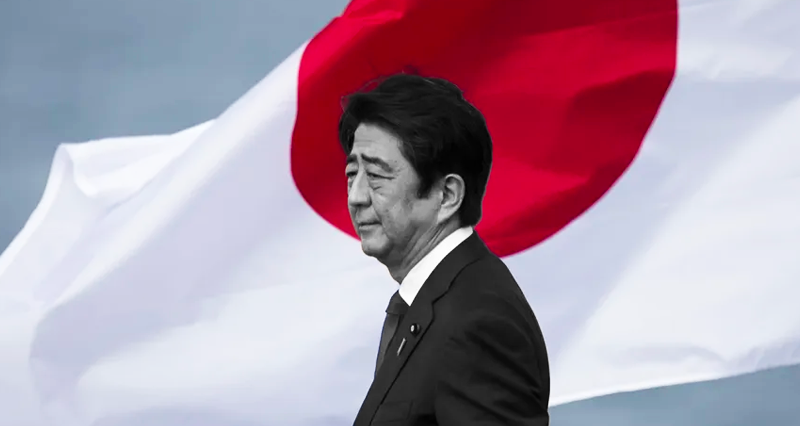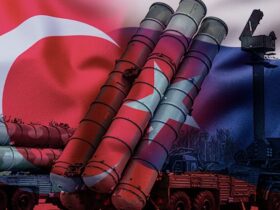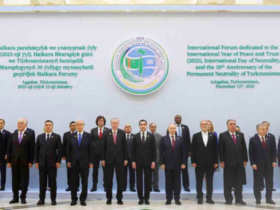By Mehmet Emre Öztürk
Shinzo Abe was giant capable the political landscape from behind the curtain His death following an assassination seems prone to change political balances in both domestic and foreign affairs. Abe’s death has already changed the political dynamics within the Liberal Democrat Party LDP. It cannot be dismissed that the assassination has shaken the political centers that define the long-term political agenda. As their insistence on the change of the constitution has already demonstrated, Abe and his supporters have been the driving force behind policy making in Japan. Nevertheless, there is no consensus on who will take over the leadership of Abe’s political wing, which has been called Seiwa Seisaku Kenkyukai.
A political party progressing along family: the LDP
Nobusuke Kishi, known as “Shōwa no yokai” (the Monster of Shōwa) in Japanese politics, was considered one of the important politicians in the Japanese imperial period. Being held responsible for the incidents in the Chinese Manchuria region after World War II, Kishi and his friends were indicted as prime suspects of war crimes. While several Japanese officers, bureaucrats and politicians trialed with him were convicted to the death penalty, the United States did not accuse him and left him free. This step has determined Kishi as the best person to lead Japan in a pro-American way after the war. With US support and resisting all the threats from the Japan Socialist Part, he started to establish the Japanese conservative camp in the 1950s. Kishi lead the merger of different smaller conservative parties to found together the LDP in 1955. He completed the movement that has created what is known as the “one-and-a-half-party” system together with the LDP, and he has created the posture of the LDP that is continuing till today.
This formation of the LDP continues for years. Nobusuke Kishi was Shinzo Abe’s grandfather. Abe used the power he derived from his grandfather as well as from his father, Shintarō Abe, to place his policies onto the foreground. His own brother meanwhile, Nobuo Kishi, has gained the critical position of the Defense Minister in the recent years. During their times in government, both brothers have engaged in initiatives to question the 9th article of the Japanese constitution.
The desire for the Empire turning into action?
With the election of Koizumi Junichiro to Prime Minister in 2001, the conservative wing gained within the LDP strength. Japan’s political history recorded that the fraction started occupying the highest political positions and thus dominating the general policy. It is said that since Koizumi, three of the four Prime Ministers came from the rather conservative sections of the LDP, which are labeled ideologically as neo-conservatives. This list includes Shinzo Abe and his follower, Prime Minister Suga Yoshihide and Fumio Kishida as well. LDP’s neo-conservative cadres follow a different line concerning Japan’s role in international politics.
The LDP’s period of gaining strength: The Yoshida Doctrine
Before Koizumi, almost all leaders of the LDP are known in Japanese politics as members of the conservative main stream, hoshu honryu. The LDP leader Ikeda Hayato became Prime Minister in 1960 and immediately declares the goal to “double the national income”. The plan had inspired the post-war Japanese generation, which was struggling to achieve a similar life standard as the United States. This inner-party movement was meant to stop military investment and instead, prioritize plans and steps of accelerating economic growth. Still, Ikeda did not present his plan as an indefinite abandoning of military power. In that context, the leaders of the Hoshu honryu were announcing that a US-provided umbrella would guarantee security. Safeguarding security in reliance on the United States and focusing on the economy, Japan followed in the Cold War the Yoshuda Doctrine that appeared in 1951.
A look at the times after 2001 presents a different picture. Neo-conservatives hate Japan’s pacifist ideology after the war, while trying to revive the pre-War traditions and prioritize the nation’s military power. It is well known that they support to connect a pro-active security and foreign policy with a stronger image of Japan. Similarly, these neo-conservatives perceive China’s peaceful rise as threat. They defend the approach of following a hardline policy against China and the People’s Democratic Republic of Korea, eliminating both threats with a strong military posture.
A new LDP under Abe’s leadership
The LDP was following a policy coordinated with the United States. In 2007, he arrival of Abe to power still indicated the entrance into a new period, when he stated that, if Japan and India were to come together, they would unite Asia, allowing “a more transparent and free flow of capital and information”. Abe’s speech was signaling that the Indian and Pacific Ocean’s were strategically connected, indicating the appearance of the idea on the international agenda that these regions needed to be free and open. The devotion of Abe to this idea even got stronger in his second term (2012 – 2014). The final point was a speech he held in Nairobi 2016, declaring for Japan the target of “an open and free Indo-Pacific with the supremacy of freedom and law”.
Since then, Japan has successfully carried the concept of the “open and free Indo-Pacific” onto the international agenda. In 2017, the US President Donald Trump joined openly the discourse of the “Open and Free Indo-Pacific”. He stated “I am proud to share our vision of an open and free Indo-Pacific”, indicating that the US would prioritize more this region in its foreign policy. On that way, the US navy turned its strategic orientation towards the Indo-Pacific and focused on the South China Sea under the label of “freedom of navigation”. This focus has caused countries such as China and the D.P.R of Korea to engage more in the region, providing a ground for renewed tensions.
Actually, operations concerning the freedom of navigation and increasing military presence were policies developed in the times of President Obama. The Comprehensive and Progressive Agreement for Trans-Pacific Partnership (CPTPP), negotiated by Obama’s team, was a hegemonic step aiming to define the basic rules for trade in the region. These economic agreements, which also enabled strengthening alliances against the rise of China, carried great weight for the “Pivot to Asia Strategy”.
But once he came to power, Donald Trump announced the withdrawal of his country from the CPTPP that had been supported by Obama and signed with 12 countries. In that situation, the move to relax Obama came from Japan. In order to save the agreement, former Prime Minister Shinzo Abe gathered the signatory countries. The Biden Administration meanwhile indicated they might return to the CPTPP, displaying that the Democrats were decided to continue the Pivot to Asia Strategy.
A joint regional strategy with the United States has without doubt prepared the ground for the change of the 9th article of the constitution. Such a change will support US military interests in the region as well respond positively to Japanese desires in regard of the imperial past.

The timing of Abe’s assassination
The constitutional change first needs the approval of the House of Councilors, the upper parliament. Abe succeeded in passing the legislation through the parliament that allows the Japanese Self Defense Forces to fight in overseas together with allies. But attempts to revise the 9th article have caused great confrontation and debate in Japanese politics. Following Russia’s operation in Ukraine, the LDP pursued policies of perception, stating that in future, Japan might also become the victim of a regional confrontation.
In May, Japanese Prime Minister Fumio Kishida said the situation in Ukraine could repeat itself in Taiwan.
In February, Abe had stated that, considering Japan’s geographic proximity and its interests, the country would suffer a great damage if China was to attack Taiwan. He added “the unexpected truth in Taiwan is the possibility of an attack on Japan”.
In order to propose a constitutional change in Japan, a two-thirds majority is needed in both houses. The elections held in the area, were the assassination took place, provided with their result the LDP the necessary seats.
After the results were declared, Prime Minister Kishida spoke, referring to the assassination of Abe. Kishida said: “Elections, which are the basis of democracy, were challenged by violence.” The government will present by the end of the year the actualized National Security Strategy, which also will include provisions concerning defense spending. The coalition lacks the true passion to increase defense spending. Some within the coalition have stated their unwilling position in regard to raise defense spending to 2% of the GDP or acquire counteroffensive capabilities for Japan.
It is obvious that this process will accelerate the constitutional change. The change of the 9th article of the constitution may turn Japan into a more militarist country and lead the country into new military alliances. It is noteworthy that Kishida was the first Prime Minister to take part in the NATO summit, held recently in Spain, while Japan is the flag carries within the QUAD and promised Taiwan military assistance. All these elements can be considered as parts of the road map of the neo-conservatives within the LDP. Should the LDP gain enough room for maneuver, even the change of those articles that prohibit Japan from becoming a nuclear power may become challenged in future.

















Leave a Reply